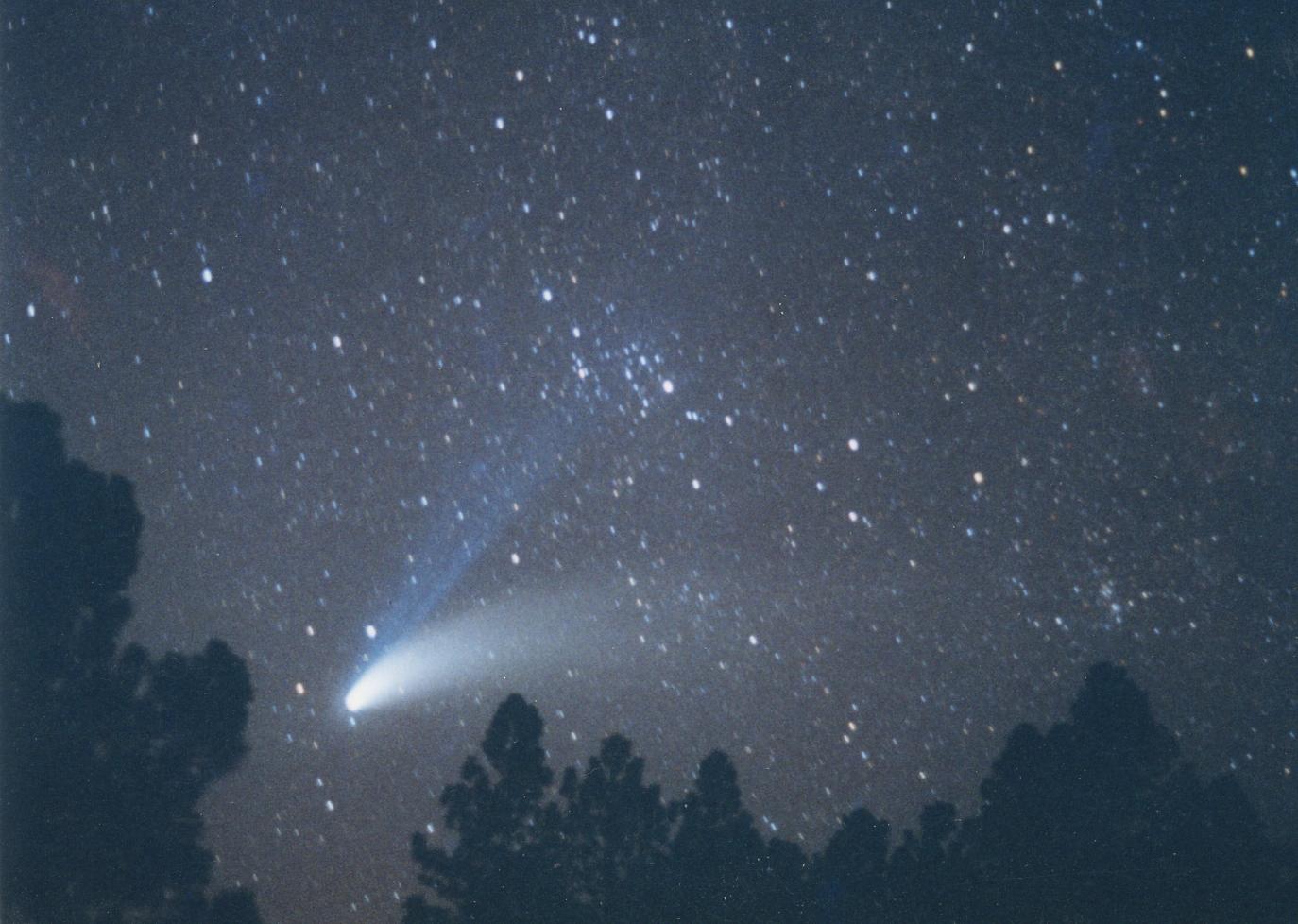JULY 19, 2009: An unknown object, most likely an asteroid a few hundred meters across, impacts Jupiter, leaving a black “scar” in Jupiter’s atmosphere that persists for the next one to two weeks; the “scar” was first noticed by amateur astronomer Anthony Wesley in New South Wales. The “scar” was reminiscent of those produced by the impacts of Comet Shoemaker-Levy 9 into Jupiter in 1994; that comet is last week’s “Comet of the Week.”
JULY 20, 1963: The path of a total solar eclipse crosses southern Alaska, central Canada, and the far northeastern continental U.S. Astronomers Francois Dossin and Bert Donn, observing from Maine, report their discovery of a probable comet near the sun that appears on several photographs they took during totality. “Eclipse Comets” are the subject of a previous “Special Topics” presentation.
JULY 22, 1960: American geologists Edward Chao and Eugene Shoemaker report their discovery of the mineral coesite at the site of the Barringer Crater (aka the Canyon Diablo Crater) near Winslow, Arizona, conclusively demonstrating its origin from an impact event. This was one of the first and best-established impact craters on Earth’s surface, which are discussed in next week’s “Special Topics” presentation.
JULY 22, 1994: Nucleus “W” of Comet Shoemaker-Levy 9 impacts Jupiter, the last of over twenty nuclei that impacted that planet over the previous week. This comet was last week’s “Comet of the Week.”
JULY 22, 2021: NASA’s Double Asteroid Redirection Test (DART) mission is scheduled for launch. DART’s destination is the binary Amor-type asteroid (65803) Didymos, where it will test asteroid deflection by impacting Didymos’ moon, which has just recently been given the name “Dimorphos.” The DART mission is discussed in a previous “Special Topics” presentation, while various deflection strategies are discussed in a future “Special Topics” presentation.

JULY 23, 1995: Shortly after midnight local time I discover an 11th-magnitude comet near the globular star cluster M70 in Sagittarius, and at around that same time an amateur astronomer in Arizona, Thomas Bopp, discovers the same comet. A little over a year and a half later Comet Hale-Bopp C/1995 O1 became one of the brightest comets of the second half of the 20th Century and was seen by more people than any other comet in history; up until this month it had been the most recent “Great Comet” for observers in the northern hemisphere. It is this week’s “Comet of the Week.”
JULY 25, 2076: The outer solar system world (90377) Sedna will pass through perihelion at a heliocentric distance of 76.2 AU. Sedna and other objects in the outer solar system are discussed in a future “Special Topics” presentation.
More from Week 30:
Comet of the Week Special Topic Free PDF Download Glossary
Ice and Stone 2020 Home Page


